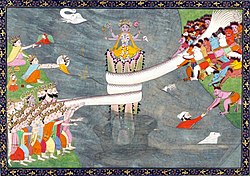5 INTERESTING PLACES TO VISIT IN INDIA
Today I am going to recomend you some places to visit in India... There are many more tan the ones that I am going to show you today but I have chosen the ones I prefered while I was investigating in the topic.
1-. Chadar - The frozen River Treck
I find really interesting to walk along a frozen river, don't you? It is an adventure and experience that you can not leave if you have the oportunity to visit India. The sights are amazing although it requires physical strength to tolerate the extream conditions.
2.- Pangong Lake, Ladakh
"Pangong Tso lake in Changthang region of Ladakh has emerged as one of the most wanted places to visit among domestic tourists in recent times especially after the Bollywood blockbuster "3 idiots". As I think you could be interested in this magical place I leave the link here for you to search more information about it.
http://devilonwheels.com/travel-guide-for-pangong-tso-lake-in-ladakh/
3.- Rann of Kutch, Gujarat
It is the largest salt desert in India and it is located 458 meters above the sea level.

4.- Caves of Meghalaya
They could be defined as the most remote place in India. They are natural formations between valleys with exotic flora and fauna to explore.
5.- Indian Ghost Town of Bhangarh, Rajasthan
As the name of the place says it is one of the scariest places all around India because it is one of the most abandoned ones. Although visitors are not afraid os ghosts because there are many trips around this sinister village.
I have tried to writte about very different places for you to chose the ones you liked more, but now I am going to leave here the link of an article I found very interesting with much more places like beaches or mountains that I am sure you will love.
100 BEAUTIFUL PLACES IN INDIA
MARIA MARTIN DE POZUELO









 exactly from a distance of 30km.
exactly from a distance of 30km.
 issues as:
issues as:

























 heir lives at risk and I am sure the situation today is not exactly what Gandhi would
heir lives at risk and I am sure the situation today is not exactly what Gandhi would
 , and Ritwik Ghatak.
, and Ritwik Ghatak.